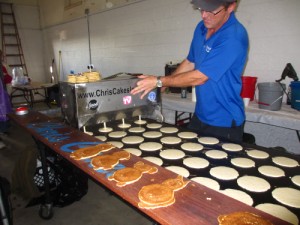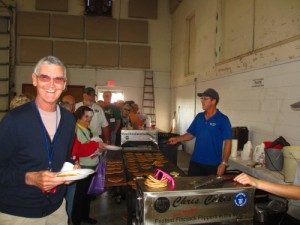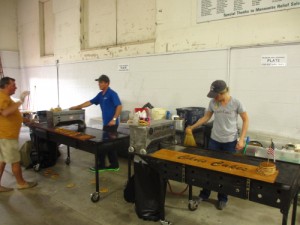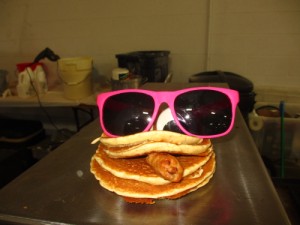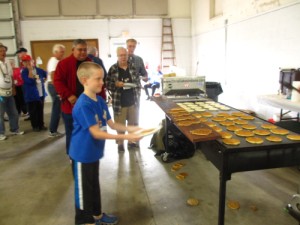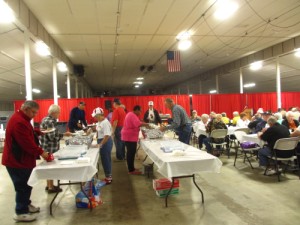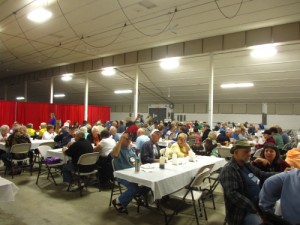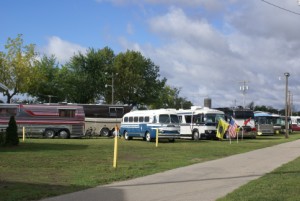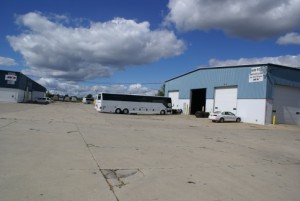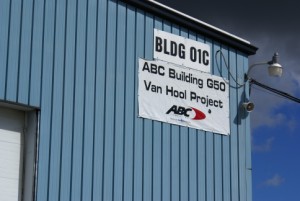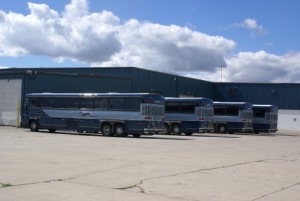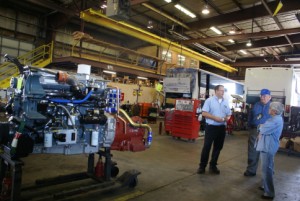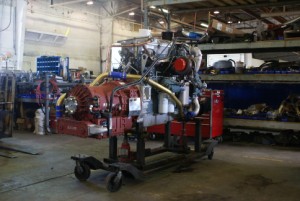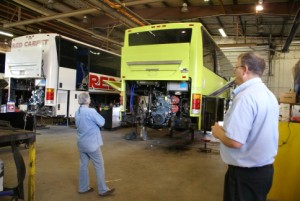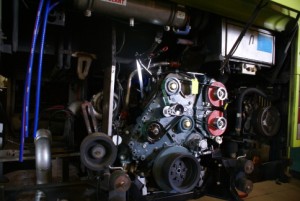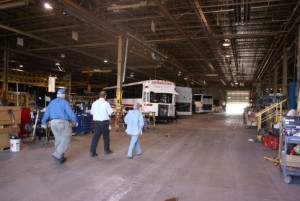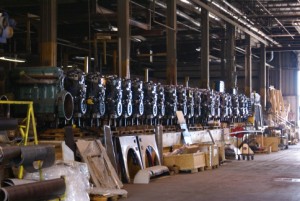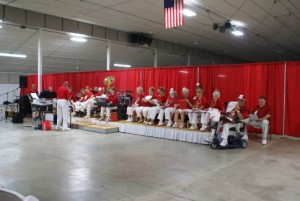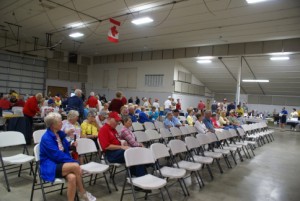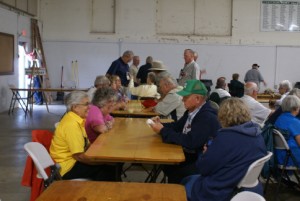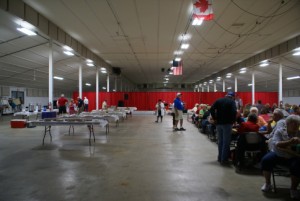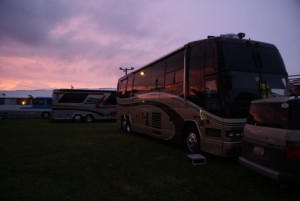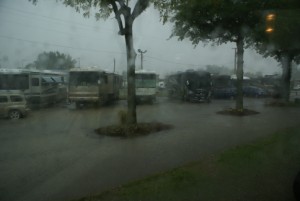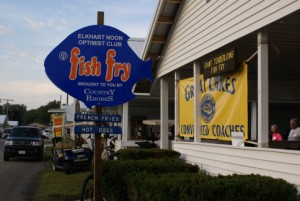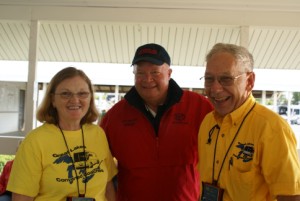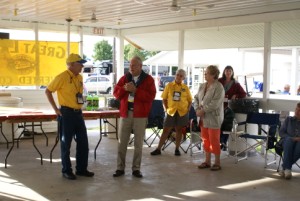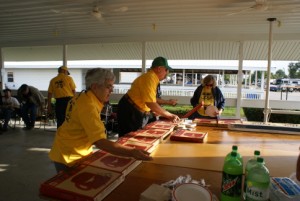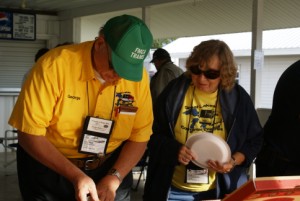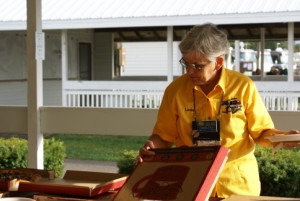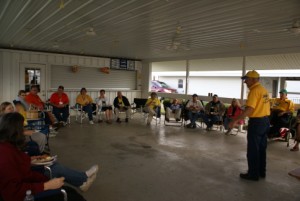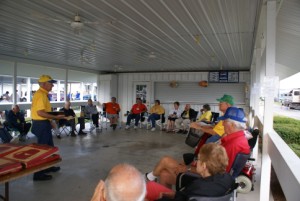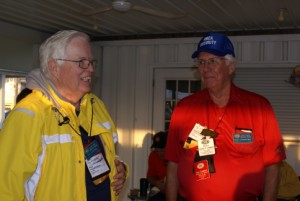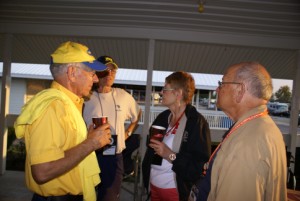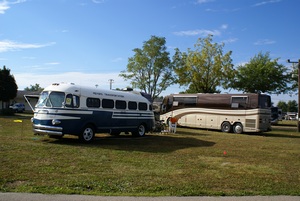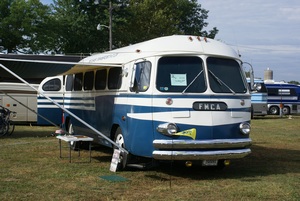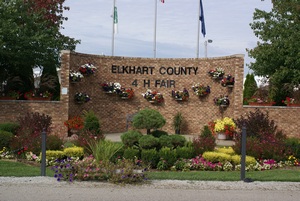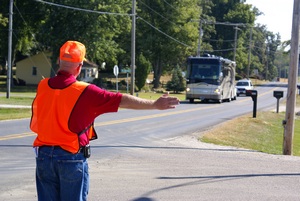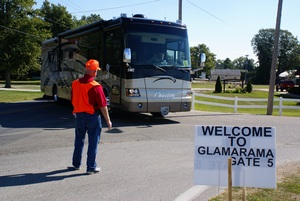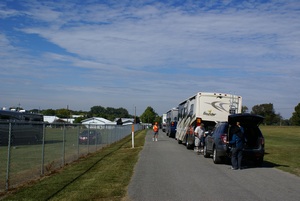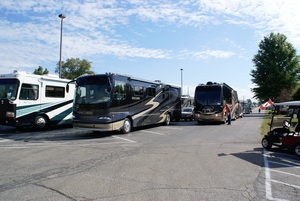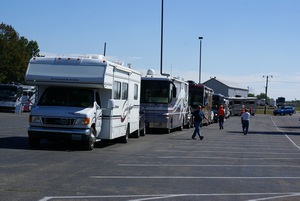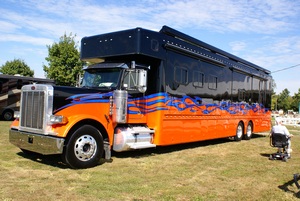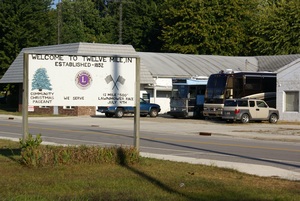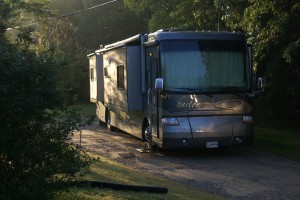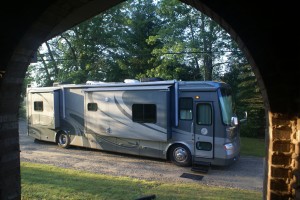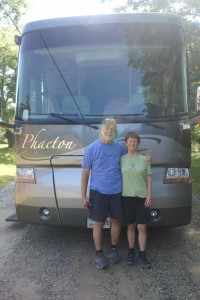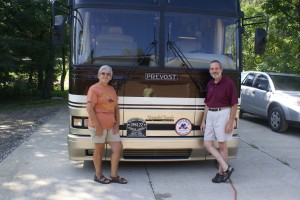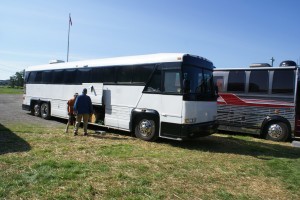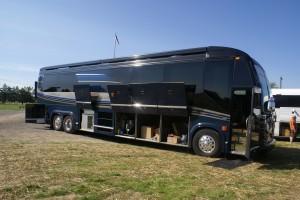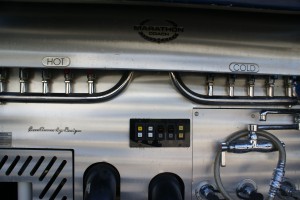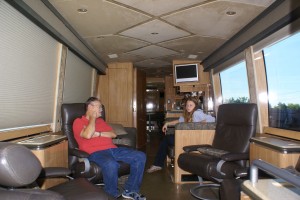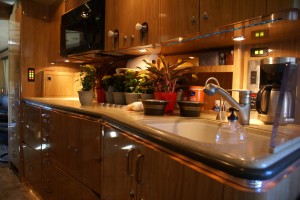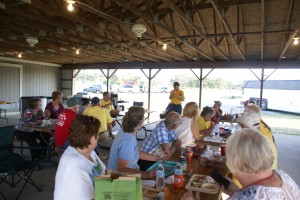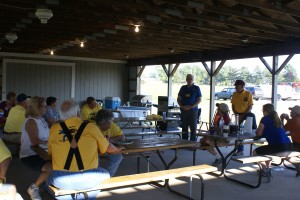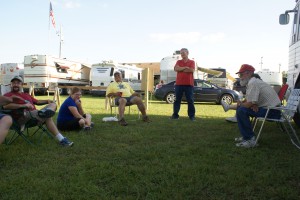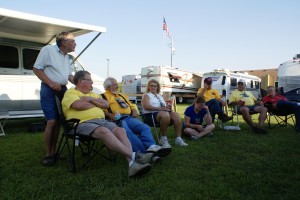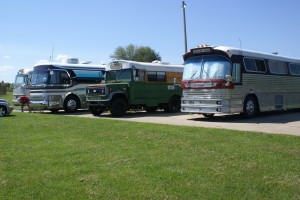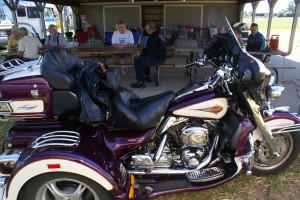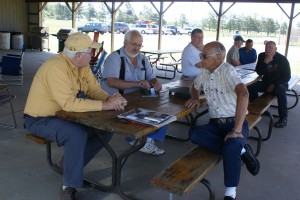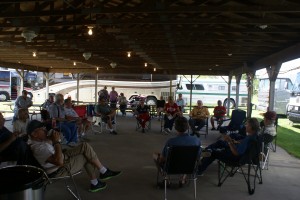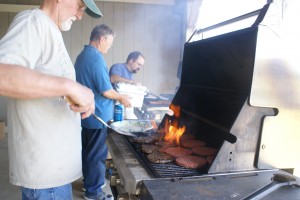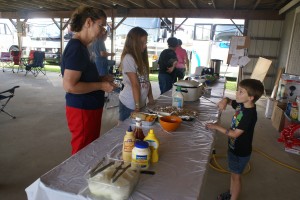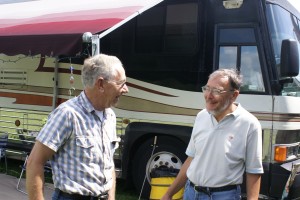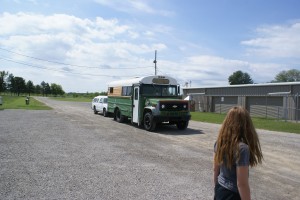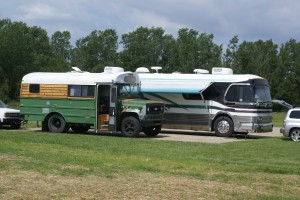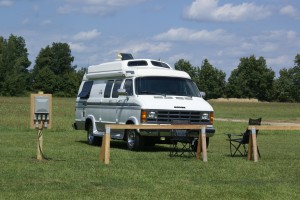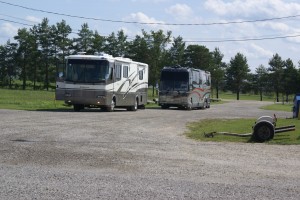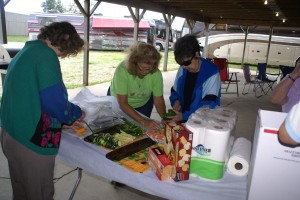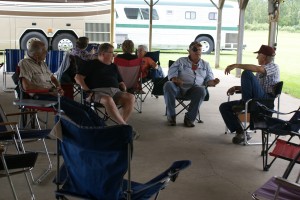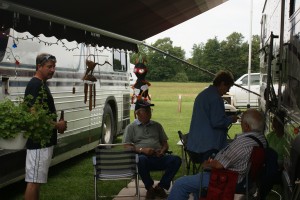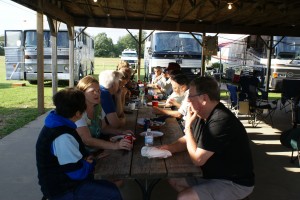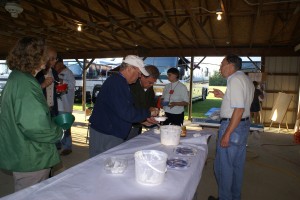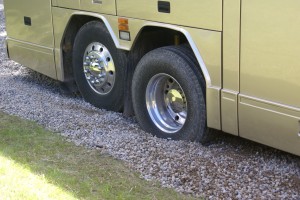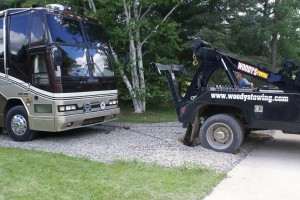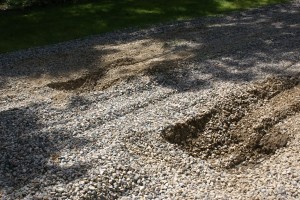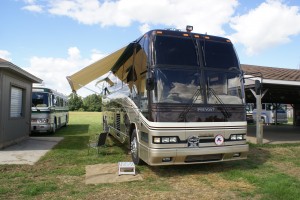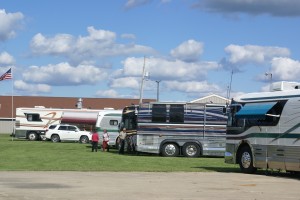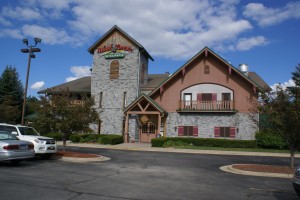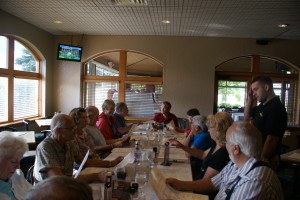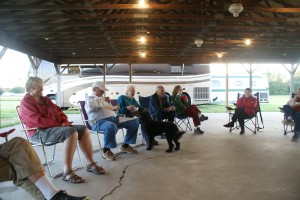No, I have not given up my WFPB way of eating, but one of the things I did on Sunday was to run a new network cable from our main Internet gateway (in the kitchen) to my office (in the basement). I had to pull the cable above a suspended ceiling and then “fish” it up through the floor boards into a wall cavity. There is a special tool called a “fish tape” that is made for this purpose. It’s a thin but stiff piece of metal that is coiled up inside a housing with a small hook on the free end. Because it is relatively stiff, you can push through holes and into wall cavities and other such places until it emerges somewhere, hopefully where you need it to emerge. I have a fish tape (of course) but I can’t find it (naturally) because the garage/workshop will be the last part of our move to get organized. So I improvised, and after several false starts ended using a scrap piece of 3-conductor sheathed electrical cable that was long enough, small enough, and stiff enough to get the job done. But I have gotten way ahead of myself.
As usual, Linda and I went to our South Lyon Area Amateur Radio Club (SLAARC) breakfast on Saturday morning. Well, almost as usual; we took two cars this time as Linda was headed to Ann Arbor to babysit munchkin Madeline after breakfast, and I was headed in the opposite direction to do ham radio stuff.
Madeline’s domestic servants (our son and his wife) wanted to attend a wedding on Sunday in Madison, Wisconsin and thought the three days required to drive there, celebrate, and drive back might work out better for all involved if their daughter did not make the trip. They also figured that Madeline would do better in their absence if she was in her own home. Madeline approved of these plans and gave them the requested 3-day pass. Although Madeline’s aunt (our daughter) provides child care one day a week, a 3-day stint, over the weekend, in a house without television would mean no college or professional football, and would have been heroic beyond necessity. This was clearly a job for GRANDMA, who doesn’t have functioning television in her new house anyway, so she wouldn’t miss it. Besides, when sitting the baby, there’s no time to watch TV (or do much of anything else).
Mike (W8XH) and I had plans to work on the new SLAARC website, but first he had to help Bruce (W8RA) set up his new LP-PAN and integrate it into his ham radio station. Working on Bruce’s ham shack is no small undertaking. I’ve never been in the Space Shuttle simulator, but I’ve seen pictures, and sitting at Bruce’s ham station is a pretty good facsimile. It took Mike a couple of hours, but he got it all working. We then headed to his QTH to do the website stuff.
Mike and I are building the new SLAARC website using WordPress with the help of fellow SLAARC member Larry (K8UT), who is a bonafide expert in such matters. A couple of weeks ago we decided to create the new website as a subdomain of the existing website, which is hosted by GoDaddy, and that was an experience in itself. This would make it very easy, however, to later change some DNS entries and have the original domain name point to the new website. Larry did the WordPress installation manually rather than using the automatic WordPress installer that most web-hosting companies have available (including GoDaddy). As a result it has taken longer to get the new site functional, but Mike and I now have a much better understanding of subdomains and an appreciation for some of the complexity that is “under the hood” when using WordPress. One more call to Larry resulted in some magic on his end, and we were finally up and running. We then spent several hours installing, activating, and exploring themes. We haven’t made any final decisions, but we are starting to figure out what questions to ask. While Mike and I are anxious to move this along, we are not under any external pressure to have it ready by a certain date and want to take our time on the front end. While it is relatively easy to change WordPress themes even after a website is populated with content, there is a point beyond which that is still going to involve a lot of work. I like projects, but I don’t like doing projects over (and over, and over …).
I was still in WordPress mode when I got home, so I did some work on our personal website. I created a tab (main menu item) for “Ham Radio” and created a sub-menu item for “SLAARC”. These are just placeholders for now, but will eventually have content. I have also fleshed out the WFPB tab as I start to build out the main menu structure.
Mike lent me an AmpedWireless dual-band WiFi repeater that he wasn’t using and I spent some time Saturday evening and Sunday morning playing with it. It is a very cool device. In WiFi repeater mode it will pick up a 2.4GHz and/or a 5.0GHz WiFi network and rebroadcast it. What’s really cool, however, is that it will pick up a 2.4GHz WiFi network and rebroadcast it as 5.0GHz WiFi network. I have been looking for a device that will do this for quite some time. Our iPads and smartphones are all 5.0GHz capable, so using them with a 5.0GHz WiFi signal offloads that traffic from the 2.4GHz network, leaving it for 2.4GHz only devices. The 5.0GHz band also has a lot more bandwidth than the 2.4GHz band with very few devices using it, so there is less interference and more reliable network connections. Unfortunately, the device did not work well at our house as it appeared to be in conflict with our WiFi thermostat.
Wireless repeaters, access points, bridges, etc. are all designed so that they can be setup and configured wirelessly through a web-browser. In order to accomplish this they map a specific URL to a specific IP address in the 192.168.xxx.yyy range. In this case, 192.168.1.240. Unfortunately, I think the WiFi thermostat also uses that IP address. There may be a way to work around this, but I did not have time to pursue that today. The AmpedWireless device is actually configurable in five different modes. WiFi repeater is the default, but it can be a Wireless Access Point or a Wireless Bridge, or two other things.
As a result of playing with this device, I think I finally understand the difference between various networking technologies. A Network Switch (NS) is a device that allows multiple devices to be connected together using network cables, with one cable going back to the router (where the IP addresses are controlled through DHCP). A Wireless Repeater (WR) is just that; it picks up a WiFi signal and rebroadcasts it (repeats it), usually on the same frequency and channel, but with a different SSID; no cables required. (The Amped Wireless WiFi Repeater can rebroadcast it on a different frequency and/or channel, very nice.) A Wireless Access Point (WAP) generates a WiFi network and is connected to the main router through a network cable. We have a Linksys WAP running now. A Wireless Bridge (WB) is the mirror image of a WAP. It allows multiple devices to be connected to it using cables (sounds like it’s a NS) and then communicates using WiFi with a wireless router or WAP. This allows lots of equipment to be located remotely from the main Internet gateway/router without running a cable between the two locations.
While Linda continued her marathon munchkin duty on Sunday, I worked around the house trying to check things off my “to-do” list faster than they got added. I didn’t succeed, but I did get a lot done. My main focus was my office, which had become the place where stuff was getting piled so we could feel like we had put other parts of the house in reasonably good order. I either needed to get it organized or close it off for the open house. Some of our fellow hams are coming to the open house and will want to see the ham shack (which is also my office), so closing it off from public view wasn’t really an option.
Monday was odds-n-ends day. I continued to try to clean up and organize my office and the basement, installed two new door closers on the front screen/storm door, and installed new hardware (tracks) for the pair of bi-fold doors on the kitchen pantry. It doesn’t sound like much, but it takes all day. I snagged some replacement toilet flappers from Lowe’s, a nice shelving unit for the bedroom from Staples, and a large quantity of ICE Sparkling Water from Walmart. (It’s not my favorite place to shop, but Meijer’s doesn’t carry this product.)
Mid-afternoon there was a knock at the door. It was a representative from a company that is subcontracting with Consumer’s Energy to possibly run a natural gas main down our street. I walked our property with the guy and explained the rather complicated situation that has led to us having two propane tanks and what they implications of that were for us switching to natural gas. I went ahead and signed up after making sure we could back out if we decided this really wasn’t what we wanted to do. As of now, however, we are definitely interested in switching to natural gas. Consumer’s Energy estimates the equivalent cost for a gallon of propane, which is currently $2.00 + or – $0.40, at $0.77. At that ratio, our infrastructure payback would be about 3 years. There is also the added benefit of having a constant supply of fuel without a truck having to come and fill a tank. Value? Priceless.
In the late afternoon I had a nice chat with Joe from EZ*Connector. EZ*Connector is a small company in California that has designed, and manufactures, a keyed, magnetically retained, sealed electrical connector. It comes in 7 and 14 pin configurations for non-military use and is an ideal solution to the problem of connecting a tow vehicle (bus) to a towed vehicle (car). Our current setup requires two separate electrical cables with mechanical or friction latches. The EZ*Connector will provide a much easier and yet superior connection. They are just now bringing a new 14 conductor cable to market and suggested I wait until early November to order.
Linda called to say she would be home around 7 PM. I put water on to boil to make angel hair pasta with red sauce, and she picked up a salad on the way home. She made the sauce last week, and it was fabulous. (I am not normally a fan of marinara sauce, but this sauce has me rethinking that position.) A glass of 2009 Egri Merlot to wash it down, and fresh plums for dessert made a fine conclusion to a long day.
